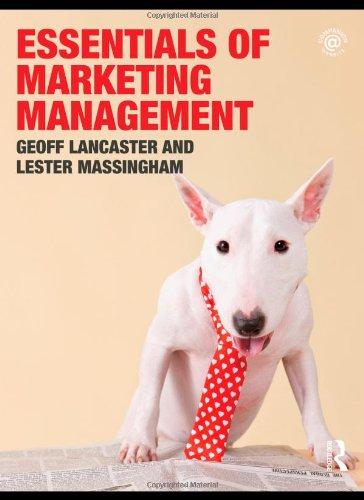Pamela Spencelayh has been the accountant at ACME Engineering for over 20 years. During that time one
Question:
Pamela Spencelayh has been the accountant at ACME Engineering for over 20 years.
During that time one of her responsibilities has been to help set prices for new products launched by the company. In her view this has never posed problems.
As an experienced cost and management accountant, Spencelayh has taken the approach of estimating the average cost of producing any new product and then simply adding on a pre-determined mark-up for profit set by the managing director in line with required rates of return. In her and the company’s view, this pricing method has worked well and has a number of advantages. She feels it is the simplest method and it ‘ensures’ that costs are covered and a profit is made. Finally, she sees it as a ‘fair’ method of pricing which can be justified both to customers and the outside world.
Over this 20-year period not all new products launched by the company have been successful. Of the unsuccessful ones, no one has ever blamed price as being a reason for failure. The view has been taken that price could not be wrong if it was based on a factual assessment of average cost with a fair margin for profit added. Spencelayh has never had to think or con -
sider the effect of price on product success and failure, and has left these considerations to the design team and the marketers who are, after all, collectively responsible for new products.
Things have now changed. As a result of appointing a new marketing manager who has had a new innovative product developed quickly, Spencelayh found her position as regards pricing decisions challenged. The new marketing manager has simply asked Spencelayh for some cost estimates. When she asked how these were going to be used and proposed a price for the new product based on these estimates, she was told that the new product would be priced using a customer-value based method. Spencelayh had never heard of this.
It was explained that for the new product it was necessary to establish the economic value of the product to the customer (EVC)
and that Spencelayh was expected to help in the costing side of this exercise. She was now extremely worried. Not only did she wonder why it was not sufficient to use cost-plus, but she had no idea what establishing the eco -
nomic value of the product to a customer meant and what information and analysis would be required to establish the EVC.
CASE STUDY QUESTIONS 1 What arguments can be used in this context to justify a customer-value based pricing method as opposed to the simpler cost-plus method?
2 What information and analyses will be required by Spencelayh to assess the EVC of the new product, and what problems might there be in using this approach to pricing?
Step by Step Answer:

Essentials Of Marketing Management
ISBN: 9780415553476
1st Edition
Authors: Geoffrey Lancaster, Lester Massingham





